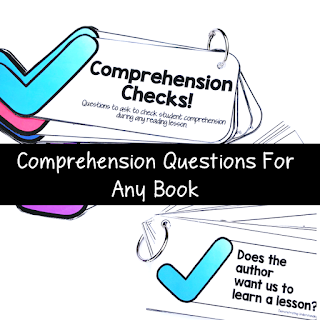Teaching phonemic awareness skills can be a challenge, but what if you are trying to teach phonemic awareness skills virtually? How does that work? Keep reading to learn more about some things I tried while teaching phonemic awareness skills online.
First things first... Knowing what Phonemic Awareness Skills Are
Perhaps you need a refresher on what phonemic awareness skills you should address with your students. Well, you are in luck. I have a handy quick reference guide that lists all the skills and examples. You can grab it by clicking the link below.
Sorting out the Logistics
Just like in the classroom, there are things to sort out before teaching, and it works the same way in a virtual environment. First and foremost, your students need to know how and when to use the mute button. Phonemic awareness is all about listening, so they need to be muted so they can hear you and not speak over you.
Another consideration is deciding when you will do your phonemic awareness instruction. Will it be during your whole group teaching time or during small group time? It can work in both situations, but I prefer working on this in a small group. Here is how I handle both scenarios:
Whole group instruction:
All students are muted, and I let them know I am looking at their mouths to see their responses. I say a word related to the skill I am working on, and, just like in the classroom, I pause to give students a chance to think and then answer. I am looking at their faces during that pause time to see them moving their mouths in response. I then say the answer and compliment a few students each time, so they realize I am watching them even though I can't hear them.
Small group instruction:
This is my preferred method. I can work on many more skills in different ways in small groups because the students can unmute themselves to respond. I have had students take turns and unmute to share, and I have had all students in the group unmuted, and I call on them one by one.
I can work on more skills in a small group, especially early skills like rhyming and beginning, middle and end sounds. You can show them pictures of things and ask for words that rhyme or you can ask them to identify the beginning, middle or ending sounds. You will have more opportunities to cover more skills in a small virtual group.
What resources can I use?
I use the same resource in my virtual classroom as I use in my face-to-face classroom, phonemic awareness word lists. My phonemic awareness word lists can be easily used to teach phonemic awareness skills virtually. Since it is a listening skill, the word lists work just fine virtually because you still need to provide words for students to respond to and manipulate.
Using digital activities is another way to teach phonemic awareness skills virtually. My favourite for this is Boom Cards because students get immediate feedback about whether they are correct or not. I am more likely to assign boom cards to my students to practice for asynchronous learning time than during our live meetings.
Teaching virtually is challenging, but having a solid plan and resources that work makes a huge difference in the success of your instruction.
If you are looking for more information on phonemic awareness, you can check out these posts:
I hope this post helps you navigate teaching phonemic awareness skills online.
Until next time,



















.png)









No comments